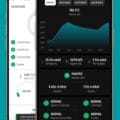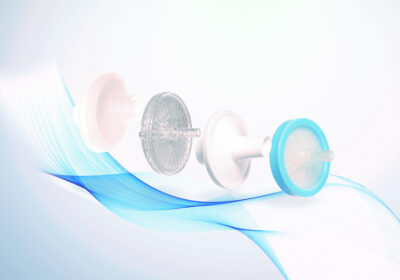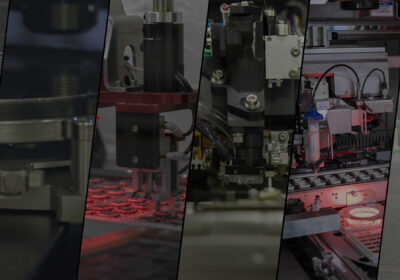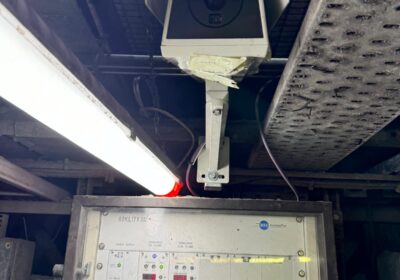Jochen Kern, Head of Sales & Marketing, micrometal Group
In today’s highly competitive and globalised manufacturing landscape, businesses are continuously seeking ways to enhance efficiency, lower costs, and reduce the time it takes to bring products to market. One technology that is making a significant impact in these areas is photo-chemical etching (PCE). This versatile, precise, and cost-effective method of manufacturing is transforming supply chains by streamlining production processes, reducing lead times, minimising tooling costs, and increasing flexibility.
This article explores how PCE is revolutionising supply chains, particularly in industries that require precision manufacturing, such as aerospace, automotive, medical devices, and electronics.
UNDERSTANDING PHOTO-CHEMICAL ETCHING
PCE is a process where a photoresist is applied to a metal sheet and then selectively removed to create a pattern. The exposed areas of the metal are then chemically etched, or dissolved, leaving behind a precise, intricate design.
PCE is distinct from other subtractive manufacturing techniques, such as stamping or laser cutting, in its ability to create highly detailed, complex shapes with tight tolerances. It is particularly well-suited for working with thin metals, making it ideal for the production of components like electronic connectors, heat exchangers, filters, and precision springs.
The simplicity and efficiency of the PCE process offer several key advantages that directly impact supply chains, leading to faster production, lower costs, and greater flexibility.
REDUCING LEAD TIMES IN PRECISION MANUFACTURING
One of the most significant benefits of PCE is the reduction of lead times. Traditional manufacturing methods such as stamping and punching often require the creation of hard tooling, which can take weeks or even months to design, produce, and test. This delay in tooling creation adds to the overall time required to bring a product to market.
In contrast, PCE does not require hard tooling. The process uses photoresists and masks, which can be rapidly designed and modified using CAD software. Once a design is finalised, a mask is created and applied to the metal sheet, and the chemical etching process can begin immediately. This drastically reduces the lead time from design to production, often to just a few days.
For businesses operating in industries where time-to-market is critical, such as electronics or automotive, the ability to produce high-precision parts quickly can provide a significant competitive advantage. By reducing lead times, PCE helps companies respond faster to customer demand, meet tight deadlines, and accelerate the development of new products.
MINIMISING TOOLING COSTS
Tooling costs are a major expense in many traditional manufacturing processes. For example, in stamping or injection moulding, custom tools must be designed, fabricated, and maintained to produce each part. These tools are typically made from expensive materials like hardened steel and require precise machining, leading to high upfront costs. Moreover, any design changes often necessitate modifications to the tooling, adding further expense and delays.
PCE eliminates the need for expensive hard tooling. Instead, as mentioned, the process relies on inexpensive photoresist masks, which can be produced at a fraction of the cost of traditional tools. The cost savings are especially pronounced when manufacturing small or intricate parts, as the complexity of the design has little impact on the cost of the mask.
In addition, design changes can be made quickly and affordably. Rather than retooling an entire production line, businesses can simply modify the digital design and produce a new mask. This not only reduces costs but also enhances production agility, allowing companies to adapt to changing market conditions or customer requirements without incurring significant expenses.
ENHANCING FLEXIBILITY IN PRODUCTION
Flexibility in production is a critical factor for success for many manufacturers. Manufacturers need to be able to adapt quickly to fluctuations in demand, changes in design specifications, and the introduction of new products. Traditional manufacturing methods, with their reliance on hard tooling and complex setups, often lack the flexibility to respond quickly to these changes.
PCE, on the other hand, offers unparalleled flexibility. The process can be easily scaled up or down, allowing manufacturers to produce small batches or large volumes with equal efficiency. This is particularly advantageous for companies producing prototypes, custom parts, or components with variable designs.
For example, in the aerospace and medical device industries, where each component may need to meet unique specifications, PCE provides the ability to produce customised parts without the need for costly retooling. This allows businesses to respond rapidly to customer requests for specialised designs or modifications, ensuring that they can meet the demands of a dynamic market.
The versatility of the PCE process also extends to the materials it can handle. While the process is commonly used with metals like stainless steel, copper, and aluminium, it is also suitable for more exotic materials like nickel alloys and titanium. This flexibility allows manufacturers to work with a wide range of materials, further expanding their production capabilities.

OPTIMISING SUPPLY CHAIN EFFICIENCY
The cumulative impact of reduced lead times, minimised tooling costs, and enhanced production flexibility is a more efficient and streamlined supply chain. By eliminating the need for hard tooling, PCE reduces the bottlenecks often associated with tool creation and maintenance. Faster production times mean that parts can be delivered more quickly, reducing inventory requirements and allowing businesses to operate with leaner supply chains.
In addition, the cost savings associated with PCE enable manufacturers to produce parts more affordably, even in smaller quantities. This is particularly beneficial in industries with volatile demand, where companies may need to produce limited runs of specialised components. By reducing the cost per part, PCE allows businesses to maintain profitability while minimising the risks associated with overproduction or excess inventory.
The ability to quickly adapt to design changes or fluctuating demand ensures that manufacturers can respond more effectively to customer needs. This responsiveness is a key driver of supply chain efficiency, as it allows businesses to better align their production processes with market demand, reducing waste and improving overall performance.
THE ENVIRONMENTAL IMPACT OF PHOTO-CHEMICAL ETCHING
In addition to its supply chain benefits, photo-chemical etching offers environmental advantages that are becoming increasingly important in today’s manufacturing landscape. The process is inherently low-waste, as it removes only the material necessary to create the desired design, leaving minimal scrap. The chemicals used in the etching process can be recycled and reused, further reducing waste and minimising the environmental footprint of the process.
Because PCE eliminates the need for hard tooling, there is also no need for the energy-intensive machining processes required to create and maintain traditional tools. This reduces the overall energy consumption of the manufacturing process, contributing to a more sustainable production model.
For companies looking to reduce their environmental impact and meet the growing demand for eco-friendly manufacturing practices, PCE offers a compelling solution.
CASE STUDIES
To fully appreciate the transformative impact of PCE on supply chains, it is helpful to examine some real-world applications. In the electronics industry, for example, PCE is widely used to produce precision components like connectors, shielding, and sensors. The ability to produce intricate designs with tight tolerances and minimal lead times has made PCE the go-to solution for many manufacturers in this space.
Similarly, in the aerospace industry, PCE is used to create complex metal parts for aircraft engines, fuel systems, and heat exchangers. The process’s ability to work with high-performance materials like titanium and nickel alloys, combined with its flexibility in production, has made it a valuable tool for aerospace manufacturers seeking to optimise their supply chains.
In the medical device industry, where precision and customisation are paramount, PCE has enabled the production of highly specialised components such as surgical instruments, stents, and diagnostic equipment. The ability to produce small batches of custom parts quickly and affordably has helped medical device manufacturers reduce costs and accelerate the development of life-saving technologies.
CONCLUSION
PCE is disrupting supply chains in precision manufacturing by reducing lead times, minimising tooling costs, and enhancing flexibility in production. As businesses face increasing pressure to deliver high-quality products faster and more efficiently, the advantages of PCE are becoming impossible to ignore.
By embracing this innovative technology, manufacturers can streamline their supply chains, reduce costs, and gain a competitive edge in today’s dynamic market. Whether producing intricate electronic components, high-performance aerospace parts, or custom medical devices, PCE offers a flexible, efficient, and environmentally friendly solution for modern precision manufacturing.







